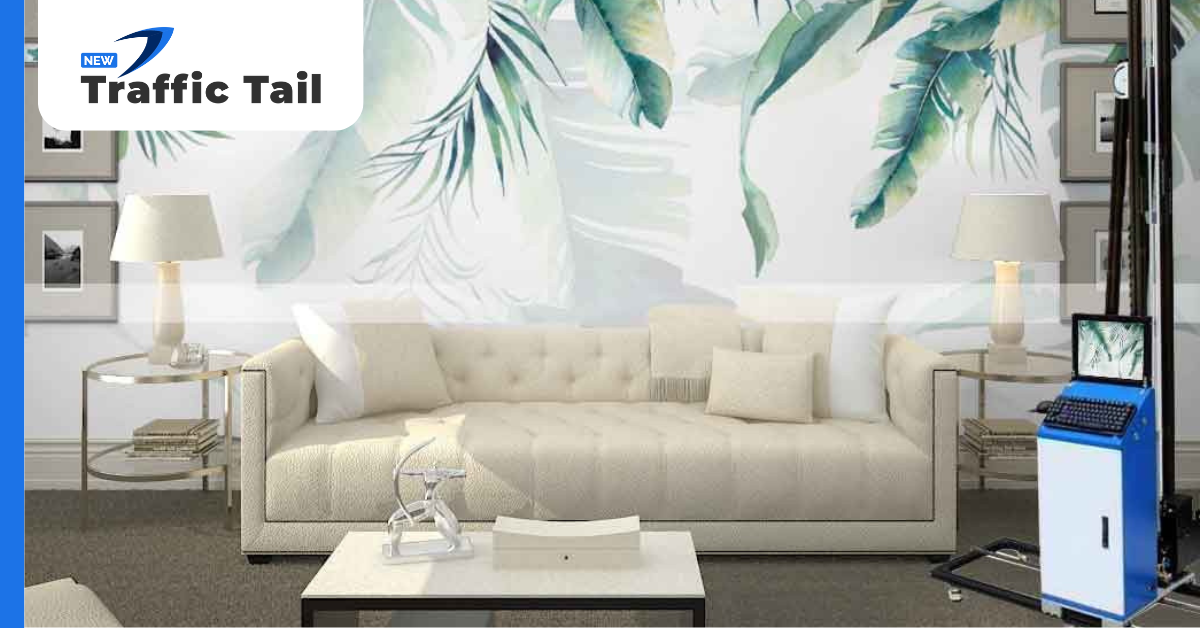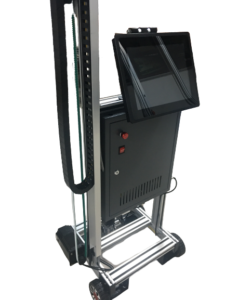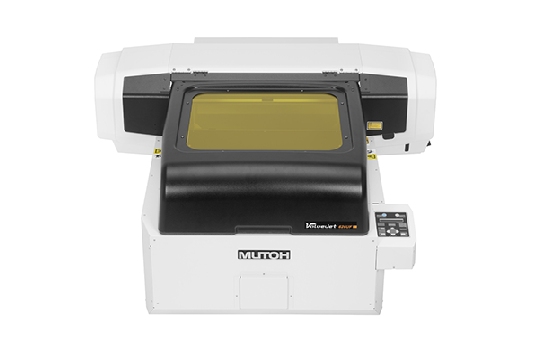If you have the skill to transform a simple space into a luxurious one, here is your guide on how to start 3D wall printing business.
Without a doubt, technological advancements have drastically changed how we approach various aspects of life, including home décor and interior design. 3D wall printing is one such innovative development that enables companies and households to completely revamp their rooms with gorgeous, personalized graphics.
If you’ve been considering starting a 3D wall printing business, now might be the perfect time to get started with this venture. In this article, we will learn how to start 3D wall printing business along with necessitates that may help you to make this venture a great success.
Let’s dive below!
What is 3D Wall Printing?
3D wall printing is a newly launched concept in the home décor industry that makes your room super luxurious and tempting. With the use of cutting-edge 3D wall printing technology, complex and customized printers print directly onto walls and other surfaces. In contrast to traditional wallpaper or paint, which are flat and have limited design options, 3D wall printing makes it possible to replicate three-dimensional textures, patterns, and images with amazing richness and depth.
With the use of a 3D printing machine, designs are digitally produced and subsequently, layer by layer copied into the required surface. This technique produces amazing visual effects and tactile sensations by incorporating a variety of materials and finishes, such as concrete, plaster, resin, and more.
Furthermore, it offers countless opportunities to modify indoor and external areas, from customized murals and creative installations to branding solutions and architectural modifications.

How to Start 3D Wall Printing Business? A Step-by-Step Guide!
Now that you know what a 3D wall printing business is. It’s time to understand the steps- how to start a 3D wall printing business. Ready? Let’s go!
Step 1: Understanding Market
Before getting started with a 3D wall printing business it is important to perform market research in terms of understanding your target audience, their preferences, and requirements. Also, you should learn about your competitors, their weaknesses, strong selling points, and lots more. With a solid market understanding you can easily stand out in the crown and may turn your business into millions of dollars.
Step 2: Select your Niche
Choose a niche within the 3D wall printing market based on your target demographic. Specializing in home or commercial areas, or more specialized applications like event decor or shop displays, can enable you to more effectively target your marketing and service offerings.
Step 3: Create Your Business Plan
Create a detailed company plan that includes your objectives, target market, pricing strategy, advertising strategy, and projected financials. This roadmap will act as a guide for your company and assist you in maintaining focus on accomplishing your goals.
Step 4: Check Legal and Regulatory Compliance
Before starting a 3D wall printing business in your area, be sure you meet all applicable legal and regulatory standards. Protect your intellectual property rights by obtaining any licenses or permits that are required or speaking with legal experts to know more about them.
Step 5: Invest in Equipment and Materials
Choose the kind of 3D printing technology that you wish to use. Examine the processes of selective laser sintering (SLS), stereolithography (SLA), and fused deposition modeling (FDM), which produce 3D-printed items layer by layer. Choose the materials you’ll use and the particular services you’ll provide, such as production, custom goods, prototyping, and more.
Step 6: Grow Your Portfolio
Create a varied portfolio that highlights your experience and the variety of services you provide. Make sample prints that showcase various finishes, textures, and design philosophies to wow prospective customers and strengthen your self-assurance.
Step 7: Marketing and Branding
To draw in customers, it is important to devote time and resources to creating a compelling brand identity and marketing plan. Make use of networking events, website optimization, and social media channels to advertise your company and produce leads. To increase your exposure, think about teaming with top digital marketing agencies that support your business online and 2X your profits.
Step 8: Build a Web Presence
A large number of your prospective customers will discover your company online. This implies that your organization will require social media identities and a website. Your web presence ought to showcase your areas of expertise and the services you provide. Choose an all-in-one e-commerce platform such as Shopify to create an engaging website.
Step 9: Deliver Outstanding Customer Service
To establish trust and build enduring connections with your clients always give priority to providing exceptional customer service. Attend to their requirements, be open and honest in your communication, and provide superior outcomes that surpass their anticipations. Positive word-of-mouth recommendations can be quite helpful for organically expanding your company.
Step 10: Keep Up to Speed and Innovate
To keep ahead of the competition, experiment with new materials, and improve your skills, make constant investments in research and development. Also, staying updated on the newest developments in the 3D printing sector in terms of trends, technology, and innovations is needed.
How Much Does It Cost To Start a 3D Wall Printing Business?
To start a 3D Wall Printing Business, it is important to consider the overall investment you need. So, here we are presenting a detailed overview of the expenditures you can’t skip, and finally, we will evaluate the cost.
3D Wall Printers
The center of your 3D wall printing business will be a printer. It can also be the most costly thing you buy. The price range of 3D printers varies. However, spending between $2,000 and $10,000 on one or more mid-range 3D printers is something to think about.

3D Modelling Software
Software for 3D modeling and slicing powers your 3D printer. There are free software solutions available, such as Blender, FreeCAD, and OpenSCAD. Some free applications, though, might not be able to handle intricate patterns. Simplify3D and Autodesk Fusion 360, which need a yearly license, are more costly choices. The price range for this and similar programs is a few hundred to several thousand dollars.

Printing Material
Materials for 3D printing are similar to the ink used in conventional paper printers. These printing ingredients come in powder, resin, or filament form. Depending on what you produce, your first batch’s cost will change, but a spool of filament can cost anywhere from $20 for standard PLA plastic to hundreds of dollars for specialist filament.
Property and Utilities
You need physical space for your 3D printing business. If your tiny start-up simply caters to the local market, you may be allowed to operate from home. If your goals are more ambitious, you may need to hire a warehouse or a larger workspace. Utilities like internet and electricity will also cost money. The cost of real estate varies according to where you live.
Legal fees and insurance
Business insurance is something that small business owners should budget for. For rate quotations, get in touch with insurance brokers directly. A lot of people will additionally cover the cost of legal services for contracts, licenses, and business registration. So get in touch with reliable brokers in your area.
Marketing costs
To advertise your own company in your target market, you will require a marketing budget. This includes creating a company website, putting paid advertisements on it, and pursuing other marketing strategies including email, social media, and search engine optimization (SEO). So, employing a digital marketing expert is a good idea.
Overall, starting a 3D wall printing business may need a sizable initial outlay of funds; nevertheless, the precise amount will rely on your unique situation and business strategy.
The Best Wall Printers You Can Add in Your Business
One of the biggest investments in starting a 3D wall Printing Business is buying the best wall printing machine. So, for ease, we have selected two 3D wall printing machines. Check below:
1. TUHAI Wall Printer
TUHAI Wall Printer offers 20% higher speed compared to other printers available in the market. It uses eco-friendly oil pigment and has a wide range of applicable materials, such as glass, wood, iron, etc. Furthermore, the print size is adjustable. To satisfy clients’ needs for both indoor and outdoor printing, it also supports ink and waterborne printing.
2. MUTOH VJ-62UF
The VJ-606UF is a six-ink channel printer that supports white and clear varnish in addition to CMYK. Despite not being the quickest printer in the market, it is still an excellent value because of its big bed size and affordable pricing. With Mutoh’s Intelligent Interweave technology, you can minimize the chance of banding while increasing print production speeds.
Now, the choice is yours. We suggest you check each 3D wall printer on its official websites to make an informed decision.

Final Words
To sum up the post – how to start a 3D wall printing business, we can say that establishing a 3D wall printing company involves commitment, imagination, and a readiness to adopt new technology.
You may successfully carve out a space for yourself in this expanding sector by adhering to these guidelines and maintaining your commitment to producing outstanding outcomes. Good Luck!
Additional Readings
How To Start a Catering Business
How To Start a Jewelry Business
FAQs
Q1. How does a 3D Wall Printing Machine Work?
A wall printing machine prints digital graphics onto walls and other surfaces by applying cutting-edge 3D printing technology. It involves various steps, such as design creation, preparation of the surface, printing setup, printing process, and finishing.
Q2. How long does it take to prepare the Wall Printer for printing?
The procedure might typically take a few minutes to many hours, depending on various factors, such as the type of printer, the intricacy of the design, and the state of the surface to be printed.
Q3. What are the types of Wall printers?
There are two types of wall printers- water-based ink wall printers and UV ink wall printers.
Q4. Which type of ink do we need for the wall printer?
UV ink.
Q5. Which surface 3D wall printing machine work on?
Almost any print surface can be used. It works well on ceramics, glass, metal, wood, and plaster.
Q6. What are the things to consider when selecting a 3D wall printer?
There are several factors to consider when selecting a 3D wall printer, such as printing technology, print size, material compatibility, speed, durability, and budget.




